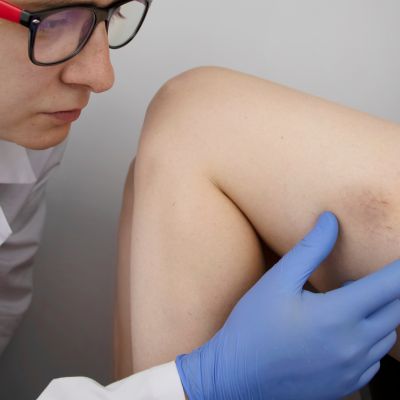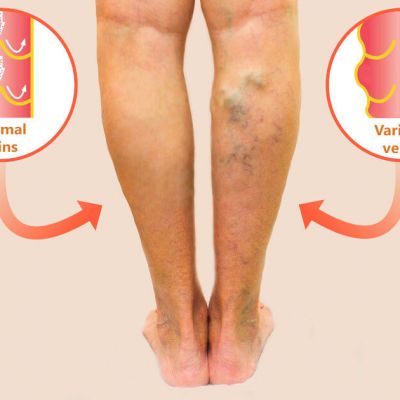Treatment for Varicose Veins
Varicose Veins are large, bulbous veins which can appear anywhere in the body but typically show up in the legs and feet. They are extremely common, affecting approximately 18% of men and 42% of women in the US. Varicose veins are the result of Chronic Venous Insufficiency, which is due to underlying venous reflux. This means that the blood is circulating down the feet from the heart through the arteries, but it is not returning up the leg through the veins as it should. Historically thought to be only a cosmetic problem, we have recently learned that this condition can lead to health problems. Fortunately, there are varicose vein treatments available to help improve the look and function rather simply by the vein doctors at Certified Foot and Ankle Specialists.
VENOUS REFLUX
Inside the veins, there are small,one-way valves which are meant to only allow the blood to go upwards from the feet to the heart. Muscle contractions and elevation cause the blood to move in this direction. As we age, due to gravity, the column of blood in the vein puts pressure on the valves, causing them to fold, allowing the blood to go backwards down to the foot or ankle. This causes the veins to dilate and become engorged with blood, showing up as varicose veins.
CHRONIC VENOUS INSUFFICIENCY
When this process goes on for months to years, patients are said to suffer from Chronic Venous Insufficiency and should seek treatment from a specialist. This can result from aging, but can also be genetic and is more likely in people who stand up a lot on a daily basis. Certain illnesses, such as liver disease, can also result in Chronic Venous Insufficiency and severe varicose veins, so it is important to have this checked out by your Foot and Ankle doctor, vein specialist or Podiatrist.
Symptoms of Chronic Venous Disease include swelling of the feet, ankles and legs, spider veins, varicose veins, soreness, heaviness, or tiredness or restlessness in the feet and legs. Pain in the legs and ankles can be the first symptom, even before varicose veins appear. Redness or dark discoloration later develops around the ankles and the skin can become hard, cracked and scaly. This is known as Venous Stasis Dermatitis and ultimately results in large open wounds which are very difficult to heal. Blood clots can also develop which can become very painful and even life threatening.
VARICOSE VEINS DIAGNOSIS AND TREATMENTS
Varicose vein doctors will perform a specialized ultrasound called a superficial venous mapping to evaluate the flow, diameter and valves in the veins. Typically, compression treatment with wraps or stockings is recommended initially for varicose veins. If patients do not respond to this conservative varicose veins treatment, an “endovenous ablation” procedure may be performed in a specialist’s office using only local anesthesia. Sclerotherapy injections with or without ultrasound may be employed as well, and in certain cases stents are placed in the veins. Varicose veins treatments are extremely successful in relieving pain, preventing unsightly legs and healing wounds if present.

Varicose Vein Surgery
There are several types of surgery available when varicose veins treatments do not respond successfully when using conservative methods. Vein stripping is one type of varicose vein surgery which may be considered. SEPS (Subfascial Endoscopic Perferator Surgery) is another less invasive varicose vein surgery which was popular some time ago. However, since the development of Endovenous Ablation as mentioned above, varicose vein surgeries are rarely necessary.
Endovenous ablation is performed through a needle which is placed into the main diseased vein in the leg, or in the perforator veins, through which a catheter is introduced. The catheter is then used to ablate or close off the vein from the inside. Once the diseased vein is closed, the blood will travel up the more functional veins, and the varicose veins will disappear. Further, chronic wounds related to varicose veins and venous reflux, will spontaneously heal. Amazingly, this simple, painless procedure is performed in the office under local anesthesia using ultrasound guidance with no down time and excellent results. Therefore, actual varicose vein surgery is not necessary in most patients.
VARICOSE VEINS TREATMENTS
If you or someone you know show signs of varicose veins, call Certified Foot and Ankle Specialists to see a doctor who specializes in the treatment of venous disease in order to resolve this problem and return to your active lifestyle!








